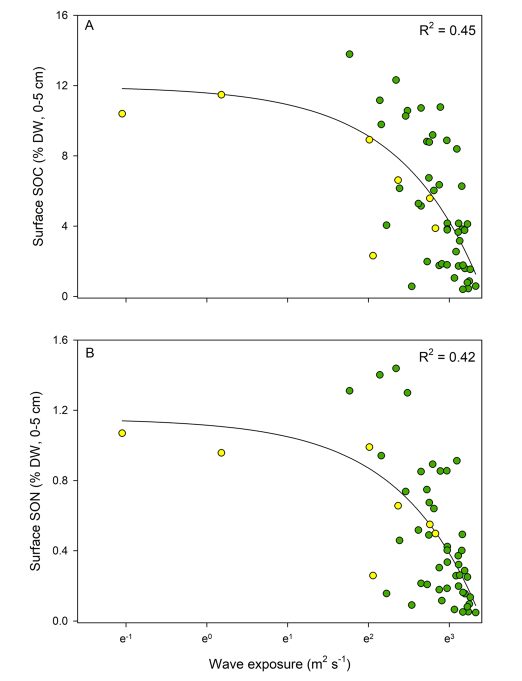ABSTRACT
Cold-temperate seagrass (Zostera marina) meadows provide several important ecosystem services, including trapping and storage of sedimentary organic carbon and nutrients. However, seagrass meadows are rapidly decreasing worldwide and there is a pressing need for protective management of the meadows and the organic matter sinks they create. Their carbon and nutrient storage potential must be properly evaluated, both at present situation and under future climate change impacts.
In this study, we assessed the effect of wave exposure on sedimentary carbon and nitrogen accumulation using existing data from 53 Z. marina meadows at the Swedish west coast. We found that meadows with higher hydrodynamic exposure had larger absolute organic carbon and nitrogen stocks (at 0–25 cm depth). This can be explained by a hydrodynamically induced sediment compaction in more exposed sites, resulting in increased sediment density and higher accumulation (per unit volume) of sedimentary organic carbon and nitrogen.
With higher sediment density, the erosion threshold is assumed to increase, and as climate change-induced storms are predicted to be more common, we suggest that wave exposed meadows can be more resilient toward storms and might therefore be even more important as carbon- and nutrient sinks in the future.
doi.org/10.1038/s41598-020-70403-5







